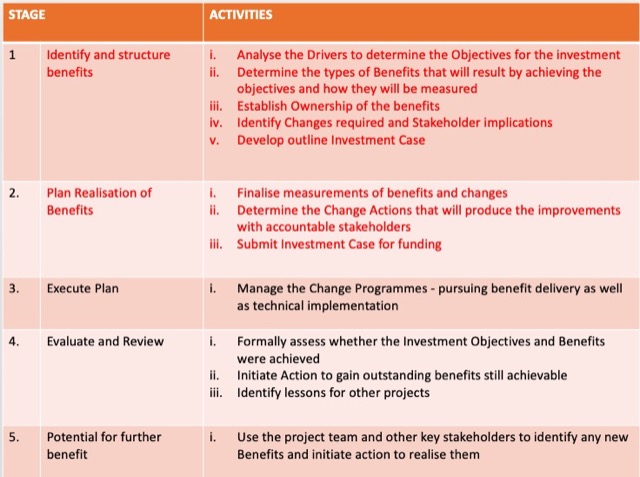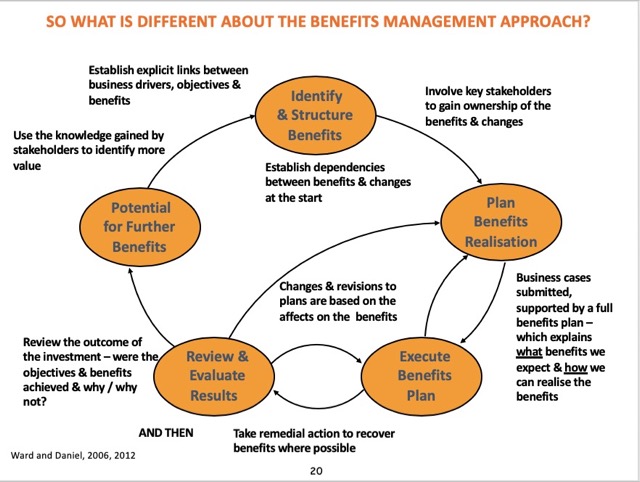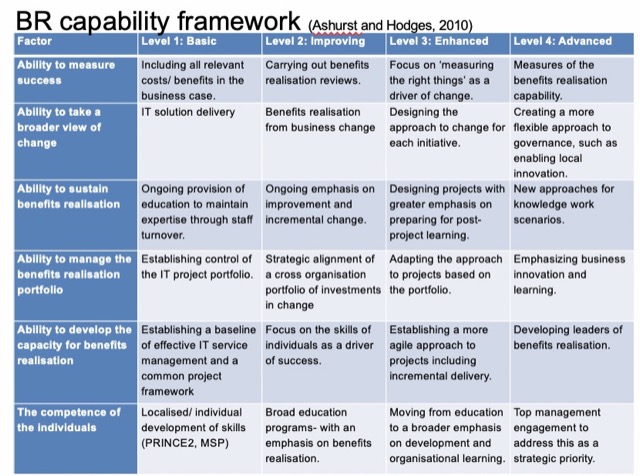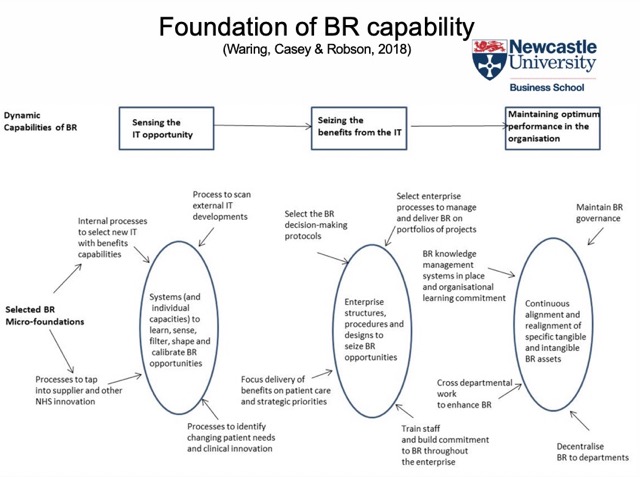第二學期部分的 Competing with IT 逐堂筆記和研讀記錄。了解 Information System & Information Technology (IS&IT)面對的機會、挑戰、風險,並進行 Case Study。
作業形式:
1. 構思可行的商業報告(既草稿) – 關於IT/IS 如何替顧客創造價值和提昇企業表現
2. 撰寫出完整的 1500*2 的商業報告
課程簡介
名稱:Competing with IT
代碼:NBS8263, Newcastle University Business School
修習時間:Term 2, 2018~2019
講師:Dr Rebecca Casey
主要參考書:
1.Ward, John and Daniel Elizabeth (2006 or 2012) Benefits Management: delivering value from IS and IT investments. Wiley
2.Ashurst, Colin (2015) Competing with IT. Palgrave
資料來源:上述書籍、課堂投影片、Wikipedia、自身整理
課堂內容
Lecture 1
1.Creating value for customers or service users and improving organisational performance by exploiting ongoing innovation in IS / IT (Ward and Daniel, 2012)
2.Cloud, Social, Mobile and Analytics – key factors of business in future
3.IT需要被使用才有價值(無內在價值)
Lecture 2 Benefits Management
Benefits management is composed of identification, definition, planning, tracking and realisation of business benefits. It is essential for an organization to delivery benefits.
不過,Business Manager 往往不認為 IT 有正面貢獻,也沒想到在 IT 上作改善、投資。
What is exactly a new approach – benefits management?
運用IT來了解潛在的商業利益,並妥善的管理的一個過程。同時,管理者需了解利害關係人(Stakeholders)的範圍。
All IT projects have outcomes; however, not all outcomes are benefits.
The Process of Benefits Management & Key Qs to develop a plan
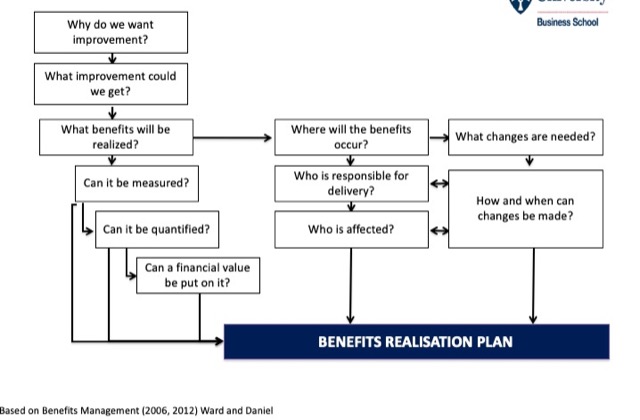
驅動力分析 (Driver Analysis)
1.關鍵問題:IS/IT需投資在組織的何處?預期效果如何?
2.目標:找出對現狀的不滿、背後緣由;改動的強度;如何評估成效(量化),最後需以客觀的角度來執行
此時,你需要運用外部&內部分析,此類的工具很多,如PESTEL, SWOT, 5-Forces…等
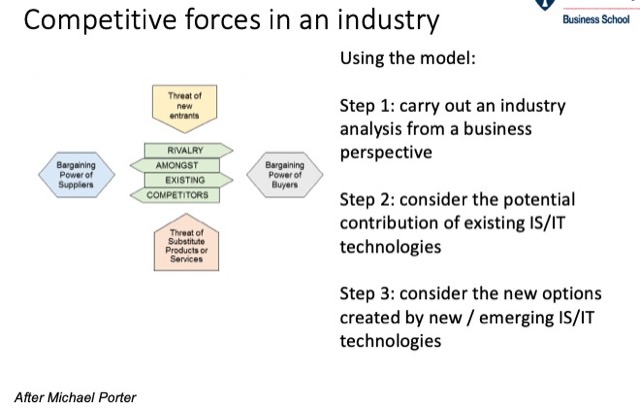
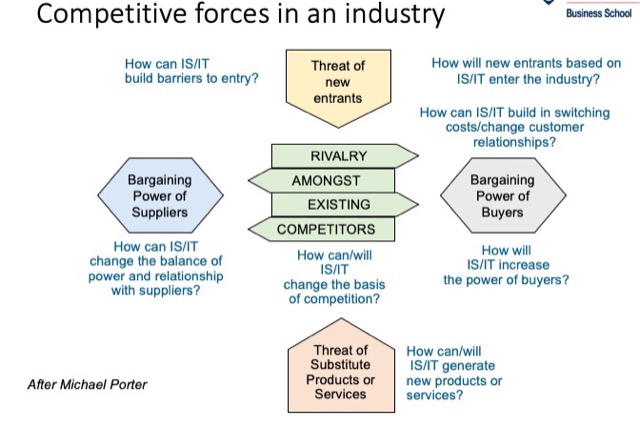
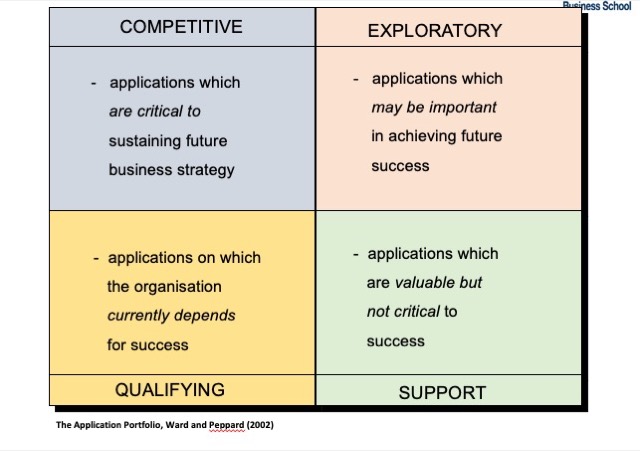
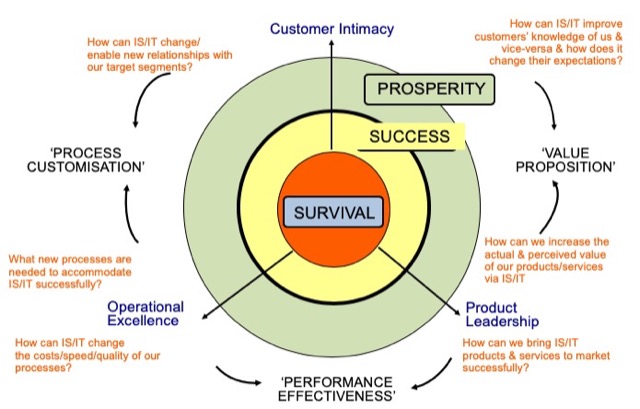
Benefits Dependency Network – Linking the ‘why’ to the ‘how’
而且,組織需要一份 realisation plan,具體化的操作步驟和細節。從需求出發(Demand-led),使眾人得以「參與」並簡單理解。
Lecture 3&4 Benefits Management
Benefits Dependency Network
1. 組織想要怎樣的利益,為什麼? – Drivers
2. 怎樣的方式、啟發點、面臨的挑戰驅使組織要這樣做?
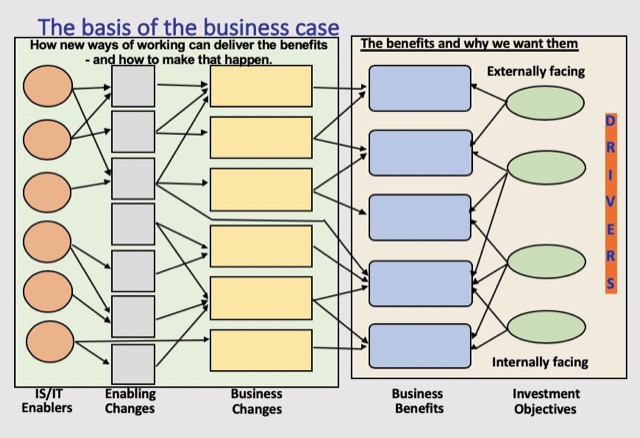
Stakeholder Analysis
利益相關者圖清晰地描繪誰是利益相關者集團。
在採取新的戰略時,代表哪個集團的利益,他們是否可能阻礙變革,他們的力量如何,應該怎樣對待他們。繪製時首先確定所有利益相關者,標出他們之間的重要關係。
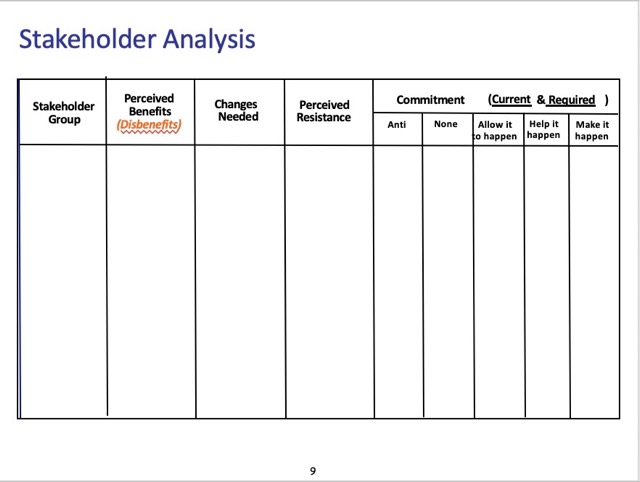
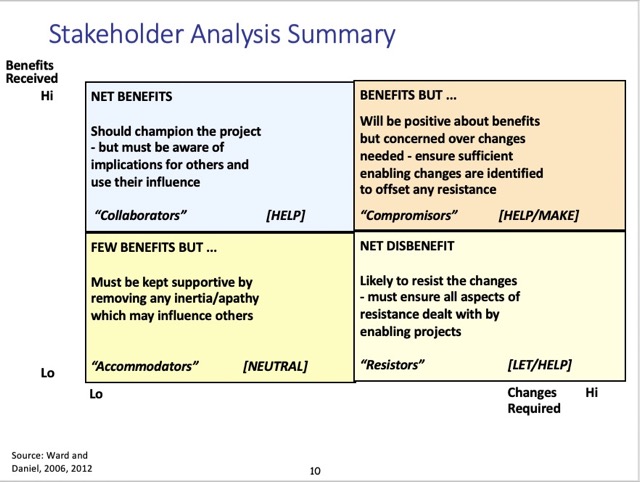
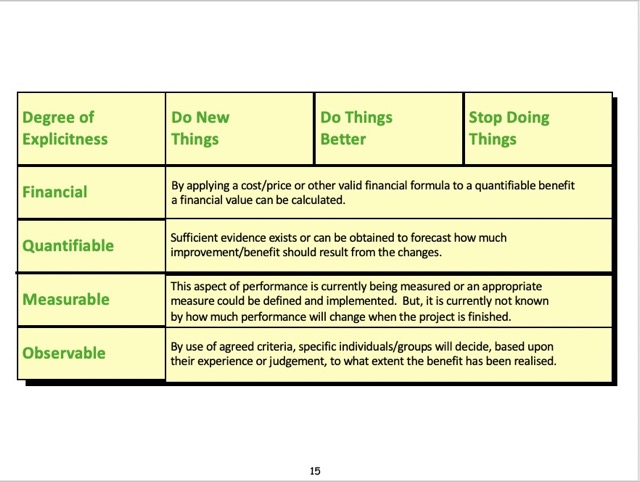
Lecture 5 by Antony & Andrzej from Motivat
The global rules are changing and the organisation’s mission is to enhance the engagement through digital solutions that increase motivation, participation and performance.
Lecture 6 Katie & Thomas from Linkedin
Linkedin mission: connect the world’s professionals to make them successful.
How to post great content on the platform?
Many types of posts including videos, photos, sharing – to provide professionals with the views and news (Editorial’s mission) 因此,它們雇用超過50位的專業編輯, for creating, curating, special projects and cultivate influential content. 迄今,每年有30%以上的觸及成長。
如何做到這樣的成長?
It is not just about tech – it’s about talent. – Content Ecosystem, speak their language, repetition (explain why, get buy-in and update frequently)
Macro Level Challenges in Managing Benefits:
1. Culture and make the difference
2. Benefit from Tech: it is difficult, but there is still a sweet spot. IT is a tool rather than rubbish.
Therefore, optimism bias mentions “forecast realistically”.
Ground Level Challenges in realistic Benefits:
1.People don’t care. – You are not amazing.
2.Better the devil you know. Change = risk
人是愛給予人幫助的,別小看 “Help me” 的力量 – ask one person, not a group.
Once someone has helped you, they’re tied into the success of what they’ve helped with.
Trust Equation: (Reliability+Credibility+Intimacy)/Self Interest
Lecture 7 by Michelle Hua – Founder of MadeWithGlove
Prototype & Agile Development,並描繪出可能的 Persona (Target Group)。
最難的是找出投資者(Investor),並面對許多的挑戰,NDA (保密協議)
女性的投資者和創業家非常稀少,比例大概為 1:9。
Lecture 8 Wardley Mapping – Recipients of benefit and context
Step 1: What is your purpose?
Step 2: What is the scope?
Step 3: Who are your users?
Step 4: What are their needs?
Step 5: What is the value chain?
Step 6: How evolved is each component in the value chain?
Step 7: Now what?
可參閱此篇看完整流程。
Lecture 9
Dynamic Capabilities – 企業動態能力(基於隱性知識,不易被文字化),指企業利用IT技術資源、組織資源和管理資源來獲得競爭優勢的能力。對於IT工作,其資產本身並不能提供超額的回報,但被合理應用於恰當的業務流程中時,就會穩步促進企業的發展,給企業帶來超額回報.
察覺機會、擴大機會利基和維持絕佳表現,這是一個將資源經競爭(多面向的,包含角色、過程、工作表現、管理框架、文化、技術等)轉換成能力(價值、稀有性、可模仿且有持續性)的過程。
按讚加入粉絲團

